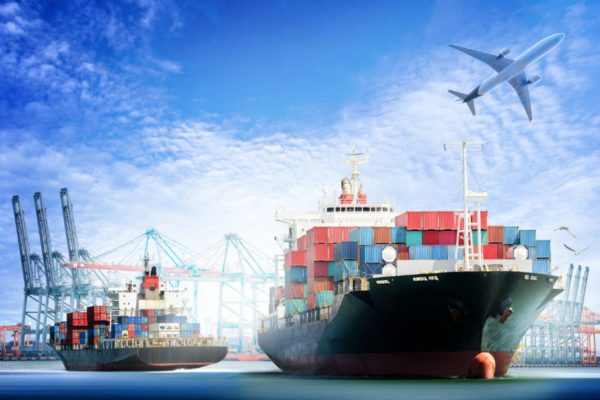Although the 2020 election cycle has been dominated by the covid-19 pandemic and widespread social justice movements, the election will have profound implications for U.S. trade policy and particularly, for our state. Texas exports totaled $330 billion dollars in 2019, roughly 20% of total U.S. exports, and account for more than 30% of the state’s GDP. Where do the presidential candidates stand on trade? There are some key differences.
Donald Trump ran in 2016 on a populist, anti-globalization platform promising to put America first and get tough on trade partners like China. Since taking office, he has followed through on many of his goals, announcing U.S. withdrawal from the Trans-Pacific Partnership (proposed but not ratified under the Obama Administration), renegotiating several aspects of NAFTA to produce the US-Mexico-Canada Agreement, and engaging China in a trade war, putting tariffs on many of its products.
These policies help some segments of the population but hurt others. Some manufacturing workers in industries that compete with Chinese imports benefit, as do workers in industries that have chosen to keep production in the U.S. because of new local content requirements in the US-Mexico-Canada Agreement.
But all tariffs create higher prices for consumers, as importers within the U.S. pay tax revenue to the government and must adjust their prices to offset those costs. And many exporters, such as farmers in Midwest states like Iowa, Illinois, or Wisconsin, have been hurt by retaliatory tariffs from China.
Finally, job loss in some sectors of the U.S. economy are driven by larger, long-term structural forces that tariffs can’t address, such as automation in manufacturing.
The Trump Administration has also rejected multilateral governance of trade, opting to operate outside of the World Trade Organization’s Dispute Settlement Mechanism – a court of sorts for resolving trade disputes. In fact, the U.S. has now effectively paralyzed the mechanism by refusing to approve the appointment of new appellate judges. This has undermined the ability of other countries to seek redress for allegations of unfair trading practices.
As for Joe Biden, he comes from a tradition of centrist, pragmatic democrats that generally embrace free trade. Yet he has also been supportive of labor protections, and may seek to do more to compensate those displaced by foreign competition, especially with pressure from the far left of the Democratic Party.
He has criticized many of Donald Trump’s trade policies as overly erratic, which may undermine U.S. credibility. He has also argued for a tough stance on China, but in the past supported multilateral initiatives like the Trans-Pacific Partnership, which would have positioned the U.S. as an alternative trade partner to China for many Asian countries.
Biden has been critical of the Trump Administration’s negotiations with China, arguing that China has been let off easy. It is likely that a Biden Presidential Administration would seek to repair many of the frayed relations with traditional U.S. trading partners, while seeking greater multilateral cooperation to push back against China’s growing economic influence.
Biden would also most likely seek to restore American leadership within international institutions, such as the Word Trade Organization. As a senator and later as Vice President, Biden was known for his foreign policy expertise. He views a robust U.S. presence in the world as critical to U.S. power and prosperity, and one way the U.S. has helped maintain a liberal order since 1945 is by wielding its power through institutions. The Obama Administration attempted to utilize the Dispute Settlement Mechanism to put pressure on China, filing multiple disputes that resulted in several policy concessions.
The candidates pose a stark contrast on many issues, including their approach to international trade policy. Their only point of agreement would seem to be confronting China, although they differ on the approach. The choice will be an important one for Texas, given the size of its export sector.
Terrence Chapman is an associate professor of government at The University of Texas at Austin.
A version of this op-ed appeared in the San Antonio Express News.




